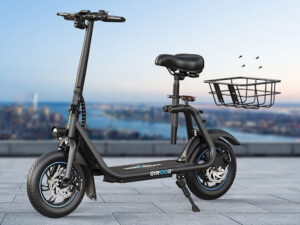As urban landscapes continue to evolve, the need for sustainable and efficient transportation becomes increasingly evident.
In response to this demand, urban electric vehicles (UEVs) have emerged as a revolutionary solution, offering a cleaner, quieter, and more environmentally friendly alternative to traditional combustion engine vehicles.
In this article, we’ll explore the key features, benefits, and challenges associated with urban electric vehicles, shedding light on their role in shaping the future of urban mobility.
Key Features of Urban Electric Vehicles
- Compact Design: Urban electric vehicles are designed with the urban environment in mind. Their compact size allows for easy maneuverability through crowded streets and tight parking spaces, making them an ideal choice for city dwellers.
- Emission-Free Operation: One of the primary advantages of UEVs is their contribution to reducing air pollution. With zero tailpipe emissions, electric vehicles play a crucial role in creating cleaner and healthier urban air quality, contributing to a more sustainable and livable urban environment.
- Quiet Operation: Unlike traditional vehicles with internal combustion engines, electric vehicles operate quietly, minimizing noise pollution in urban areas. This feature enhances the overall quality of life for residents and contributes to a more peaceful urban experience.
Benefits of Urban Electric Vehicles
- Environmental Sustainability: The shift towards electric vehicles aligns with global efforts to reduce greenhouse gas emissions and combat climate change. UEVs help decrease the carbon footprint of urban transportation, promoting a cleaner and more sustainable future.
- Cost Savings: While the initial investment in an electric vehicle may be higher, the long-term cost savings can be substantial. Lower maintenance costs, reduced fuel expenses, and potential government incentives make UEVs an economically viable choice for urban commuters.
- Enhanced Energy Efficiency: Electric vehicles are generally more energy-efficient than their internal combustion counterparts. The conversion of electrical energy to mechanical power in electric vehicles is more efficient than the combustion process, contributing to reduced energy consumption.
Challenges and Considerations
- Charging Infrastructure: The widespread adoption of UEVs relies heavily on the development of a robust charging infrastructure. Cities must invest in expanding charging networks to support the growing demand for electric vehicles.
- Range Anxiety: Although advancements in battery technology are improving the range of electric vehicles, concerns about “range anxiety” persist. Addressing this issue requires continued innovation in battery technology and increased public awareness of charging options.
Conclusion
Urban electric vehicles are driving a transformative change in urban mobility, offering a sustainable, cost-effective, and efficient solution to the challenges posed by traditional transportation methods.
As cities continue to prioritize environmental sustainability and the well-being of their residents, the rise of electric vehicles in urban landscapes represents a significant step towards a cleaner, greener, and more livable future.



